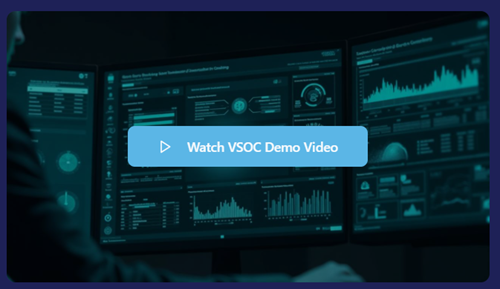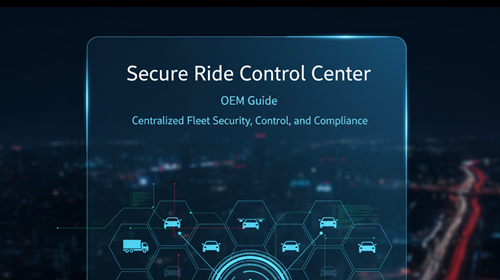
/
March 7, 2023
/
#
Min Read
Moving Towards a Subscription-based Model in Automotive
Similar to 100 years ago, the automotive industry is undergoing a huge shift. Connectivity, over-the-air (OTA) updates, and usage information are being used to make vehicles safer and keep them running longer. As vehicle longevity continues to increase, OEMs will need to find new and innovative ways to turn a profit. One such option is the subscription-based business model. This idea isn’t new to the world - in fact, it’s proven successful in other industries. It is, however, quite new to the automotive industry and many are approaching it with resistance. Does the subscription model stand a chance? Read on to find out.
The Hybrid Subscription Model
One way to ease into the subscription-based model is through a hybrid approach, in which the product or service in question is offered in both a purchase and a subscription version.
A perfect example of this outside of the automotive industry is Microsoft Office. When Office first hit the shelves it was considered a product. Customers would pay a flat fee and get a disk to install the product on their computers. The trouble with this was that the product couldn’t change or evolve with the times. After a while, the customer would need to upgrade to the next version and spend the money all over again. Now, Microsoft offers two different options: buy the product outright (but without any future updates) or subscribe to the service of using the product along with access to all updated versions.
Okay, but how does that translate to the automotive industry? Let’s start by looking at a scenario without a subscription option.
In this example, a certain vehicle model comes with up to six drive modes: standard, sport, eco, sand, mud/snow, and slippery. A customer living in an urban center might not need all six modes and so when they purchase the vehicle they choose a trim that only includes standard and eco. That’s all fine and dandy, until two years later when they decide to move to a rural mountain community where it snows in winter and many of the roads are unpaved. Since they purchased a vehicle with only two drive modes (neither of which is equipped to handle rugged roads) they will have no choice but to replace their current (perfectly functional) vehicle.
What would this look like in a subscription model? Well, when the owners first bought their vehicle, standard drive mode would have been included in the base package. The owners might then have opted to subscribe to the service of eco mode, considering they live in the city. However, once they decided to move to the mountains they would be able to adjust their subscription to include mud/snow. As long as the vehicle manufacturer has full-vehicle over-the-air update capabilities, all of this would happen remotely, with no dealer visit or physical modification required.
In a different scenario, subscription features might also be offered on an on-demand basis. Similar to the way that Amazon Prime offers its plans with a “Cancel Anytime” clause. This seems ideal for situations where a customer only requires a feature every so often.
Subscription Beyond Features
A subscription-based approach is not only applicable to vehicle services (such as access to drive modes) but also to vehicle ownership models. Urban areas are notorious for traffic congestion and insufficient parking, with most vehicles sitting unused up to 96% of the time. According to AAA, the average annual cost of vehicle ownership is just over $9,000, that’s not including parking fees, road tolls, or congestion charges. If we do that math, that means the average vehicle owner is paying $8,640 a year for their vehicle to sit and collect dust, or bird poo.
Rather than owning a vehicle and only using it 4% of the time, shared mobility services provide vehicle users with a personal transportation option only when they need it. This is different from leasing in that the user subscribes to various days of the week, times of day, and locations, as opposed to being the sole vehicle user for a certain duration of time. This type of subscription service can be easily streamlined using over-the-air (OTA) technology. Instead of having to pick up a manual key, subscribers will receive access via their phone that allows them to unlock, turn on, and precondition the vehicle during their scheduled hours. Vehicle sharing not only reduces the number of vehicles per capita, additionally reducing parking requirements, but it also eliminates many of the costs associated with vehicle ownership.
Consumer Pushback
OEMS need to consider which features and services actually work within a subscription-based model. Hardware-based capabilities, for example, will likely receive consumer pushback. Let’s look at 4WD capabilities, a feature that is quite similar to the drive modes example except for one key difference. Unlike drive modes which leverage software to adjust vehicle settings such as pedal sensitivity, computer traction, suspension settings, and fuel distribution, 4WD requires additional physical components.
It might be tempting to offer a hybrid vehicle with subscription-based 4WD for those urban inhabitants who enjoy an occasional weekend away. The trouble with this is even if the vehicle is cheaper than its non-subscription-based counterparts, the components required to support 4WD impact vehicle weight, which in turn impacts gas mileage and potentially long-term maintenance costs.
The argument here is: Why should I subscribe to a feature that I’ve already paid for? I’m paying to lug it. I’m paying to maintain it. But I don’t get to use it? To avoid this type of pushback, automakers should focus their efforts on monetizing software-defined features that are truly service-based, rather than hardware components.
Enabling Features with Sibros
Not everyone likes the idea of bringing the subscription service model into the automotive industry. However, as we have seen with other industries, having the option to subscribe isn’t always a bad thing. As the world transitions to more software-defined vehicles, having access to subscription features at the push of a button will prove instrumental in enhancing the driver experience. Even so, OEMs must evaluate which features are more likely to succeed in a subscription-based model. Software services that are services by their nature will be easier to monetize and not create pushback.
Whether supporting subscription-based services or simply trying to keep vehicles updated with the latest safety features and software, Sibros offers a holistic approach to the software-defined vehicles of the future. Sibros’ Deep Connected Platform enables OEMs with a comprehensive suite of connected vehicle software and data management solutions, including over-the-air updates, flexible data logging, and full lifecycle management, all on one seamlessly integrated platform. To find out more about how we can enable your next use case, contact us today.










